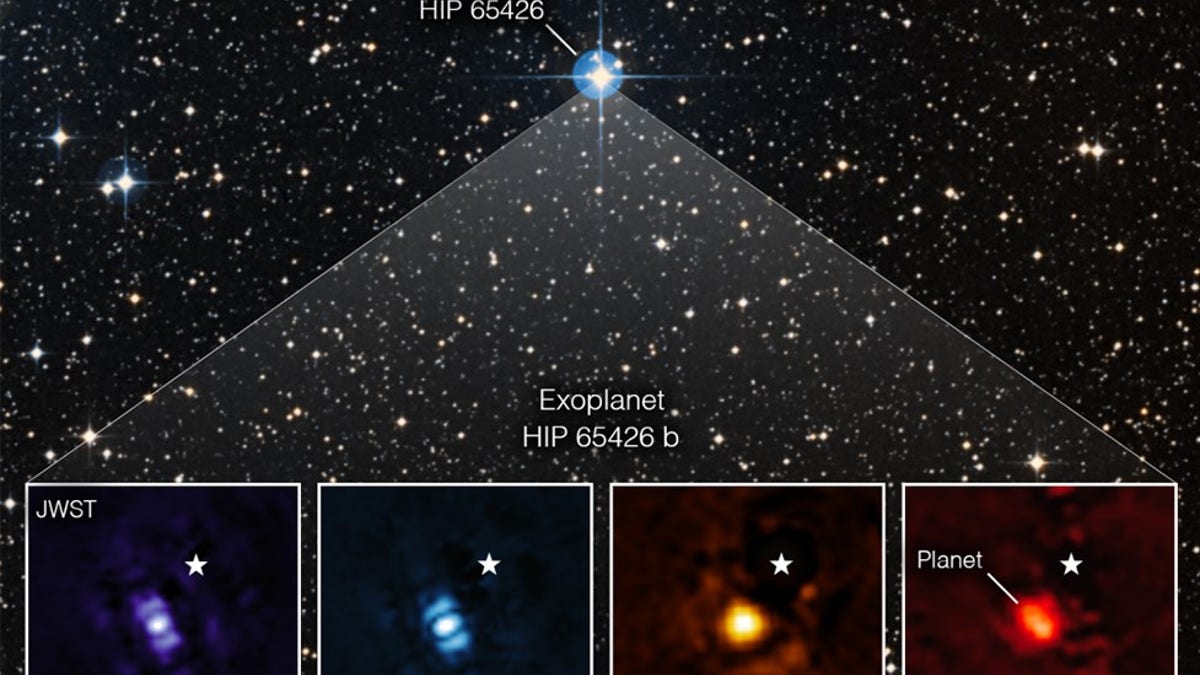NASA postpones Artemis 1 mission to moon
First female pilot and commander of a space shuttle Eileen Collins shares her thoughts on NASA's Artemis 1 mission
NASA on Thursday shared an image taken by the James Webb Telescope showing the first-ever direct image of a planet outside our solar system.
NASA says the exoplanet, HIP 65426 b, is a gas giant, meaning it has no rocky surface and could not be habitable. The image can be seen through different bands of infrared light.
Sasha Hinkley, associate professor of physics and astronomy at the University of Exeter in the United Kingdom, who led the observations, called the images a "transformative moment, not only for Webb but also for astronomy generally."

A photo of exoplanet 65426 b released by NASA. (NASA)
HIP 65426 b is about six to 12 times the mass of Jupiter and between 15-20 million years old, NASA says. Earth, by comparison, is around 4.5 billion years old. HIP 65426 b is also about 100 times farther from its host star than Earth is from the Sun.
Astronomers discovered the exoplanet in 2017 using the SPHERE instrument on the European Southern Observatory’s Very Large Telescope in Chile. Images were initially taken using short infrared wavelengths of light.
NASA RELEASES JAMES WEBB SPACE TELESCOPE IMAGE OF PHANTOM GALAXY
Webb’s view uses longer infrared wavelengths, revealing new details that ground-based telescopes couldn’t detect because of the intrinsic infrared glow of Earth’s atmosphere, NASA says.
Webb’s Near-Infrared Camera (NIRCam) and Mid-Infrared Instrument (MIRI) were equipped with coronagraphs that blocked out starlight – which is much brighter than planets – enabling direct images of exoplanets like HIP 65426 b.
NASA says the breakthrough opens the doors to future possibilities for studying distant worlds.
CLICK HERE TO GET THE FOX NEWS APP
"I think what’s most exciting is that we’ve only just begun," said Aarynn Carter, a postdoctoral researcher at the University of California, Santa Cruz, who led the analysis of the images. "There are many more images of exoplanets to come that will shape our overall understanding of their physics, chemistry, and formation. We may even discover previously unknown planets, too."




















